Suncheon Bay Wetland Reserve: Where To Go In Jeollanam-do
Last Updated on February 12, 2024
Taking a trip to Jeollanam-do, don’t miss the natural wonder of Suncheonman Bay Wetland Reserve (순천만습지 or 순천만자연생태공원), a world-class wetland located on the southern coast of Korea. Officially certified by the Ramsar Convention and UNESCO, this pristine reserve boasts intact natural coastlines and a diverse ecosystem.
One of the most popular places in Suncheon and something that people visiting nearby Yeosu often add to their itinerary, the reserve is beautiful in every season so I’ve been told but is most often showcased in the autumn when the reads are brown and waving in the wind. From rare bird sightings to thriving wildlife, get ready to explore the unique features of Suncheonman Bay. Whether you’re planning a summer escape or a winter bird-watching adventure, get ready to immerse yourself in the breathtaking scenery and rich biodiversity of Suncheonman Bay Wetland Reserve.
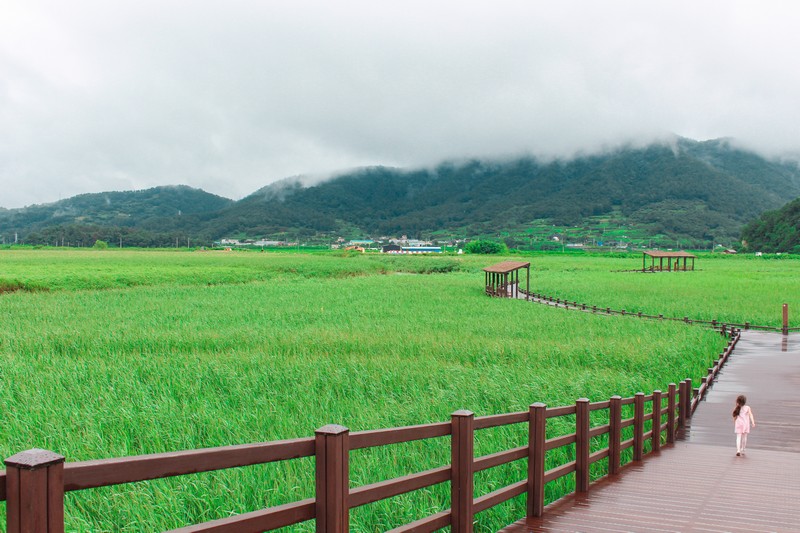
Thanks to the K-Travel bus tour that was willing to cart me down to the far southern reaches of Korea recently, I was finally able to see the spectacular scenery of Suncheon Bay Wetland Reserve. While it wasn’t autumn, it was still gorgeous.
Skip around skip around and see what abounds:
- How To Get There
- Basic Info
- What to know about Suncheon Bay Wetland Reserve
- Plan A Visit To Suncheon Bay Wetland Reserve
(This post contains affiliate links, which means I receive a certain percentage of a sale if you purchase after clicking at no cost to you. Thank you for your support.)
How To Get There
Address: 513-25 Suncheonman-gil, Suncheon-si, Jeollanam-do (라남도 순천시 순천만길 513-25)
By Car: This is an ideal time to rent your own car and take a more isolated adventure. There are some pretty epic places you can stop on the way to make an amazing itinerary as you travel south to Suncheon.
By public transportation: You can take a train to the Suncheon KTX Station and from there head to the nearby Suncheon Bay National Gardens which have a Sky Cube which takes you directly to the wetland reserve.
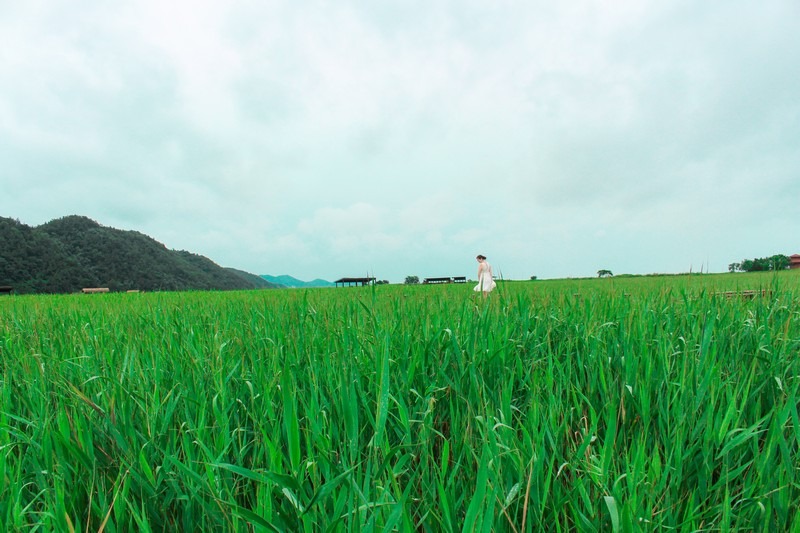
Basic Info
- Hours: 9:00am ~ Sunset.*
- Because sunset changes throughout the year, it’s important to note the “last entry” time. January & October through December, the last entry time is 5:00pm. In February, the last entry time is 5:30pm. In March and September, the last entry time is 6:00pm. In April, the last entry time is 6:30pm. In May through August, the last entry time is 7:00pm.
- Admission: Adults: W8,000; Teenagers: W6,000; Children: W4,000
- Website: www.suncheonbay.go.kr
Where To Stay In Suncheon
Hotel Raum Suncheon
Hotel Raum has a beautiful lounge on the rooftop to relax and get some views of the area. Rooms are clean, spacious, modern, and comfortable and it is really conveniently located to see the best sites in the area. The staff is attentive and helpful and there’s plenty to find in the vicinity if you want to walk around and get a bite.
Find out more and book your room on Booking.com or on Agoda.com
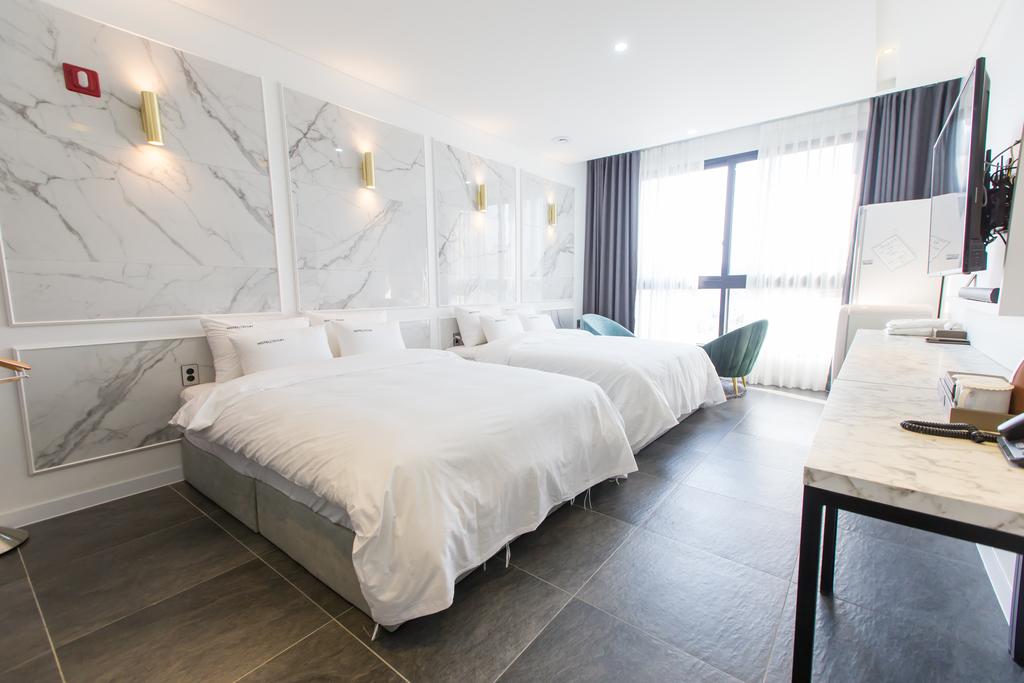
Suncheon Hotel Gite
Another great hotel in the area is Hotel Gite. The staff is great and the rooms have plenty of space and a chic modern design. This is a very comfortable hotel to stay in in Suncheon and is a great option and near everything you’ll want to see and downtown near food spots too.
Check it out and book your room on Booking.com or on Agoda.com
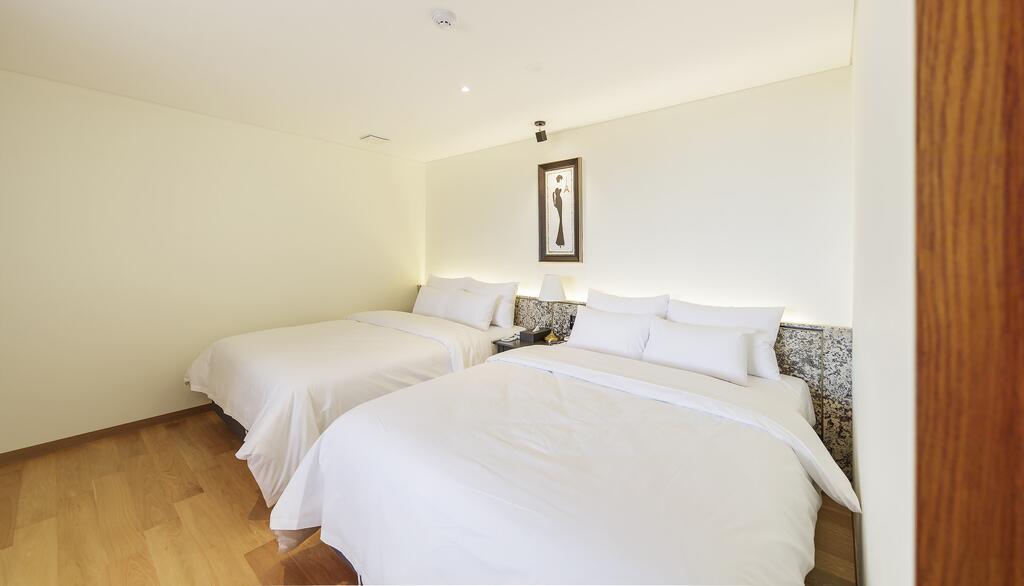
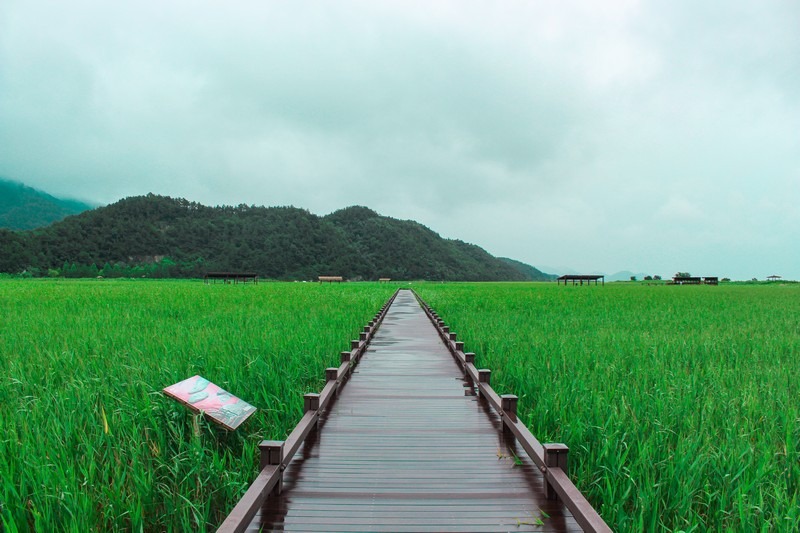
What to know about Suncheon Bay Wetland Reserve
Suncheon Bay Wetland Reserve is a world-class wetland that is officially certified by the Ramsar Convention and UNESCO due to its intact remaining natural coastline and rich biodiversity. The Ramsar Convention is an international convention that calls for conservation and wise use of wetlands and was started in Ramsar, Iran in 1971.
The Suncheon Bay Wetland Reserve claimed a spot on the Ministry of Culture, Sports, and Tourism’s list of the 100 Must Visit Spots In Korea in 2019-2020 and is also one of the places included in CNN’s 2019 list of 50 Beautiful Places To Visit In South Korea. Suffice to say, everyone agrees, we need to visit this place on the southern coast of Korea at least once.
When you visit, one thing you should note is how the urban scenery shifts to the eco-reserved area of the wetland. There are four zones that begin with the Urban Zone, then the Transition Zone where the Suncheonman National Garden is, then the Buffer Zone, where the Clear Water Management Center is, and finally the Eco-Reserved Zone, where the Suncheonman Eco Museum and Wetlands are.
Rare Bird Sightings In Korea
This wetland has various habitats that include brackish water zones, salt marshes, large reed beds, and tidal flats which means it caters to a number of species of birds. There are 17 orders, 54 family and 239 species of birds that can be seen visiting these amazing wetlands. Thirty-six of the birds are globally recognized as rare endangered birds and they all depend on the natural habitat of Suncheon Bay for survival.
If you like cranes, this is the place to see them. You can find Hooded Cranes, White-naped Cranes, Common Cranes, Siberian Cranes, and Canadian Cranes in the Suncheon Wetlands.
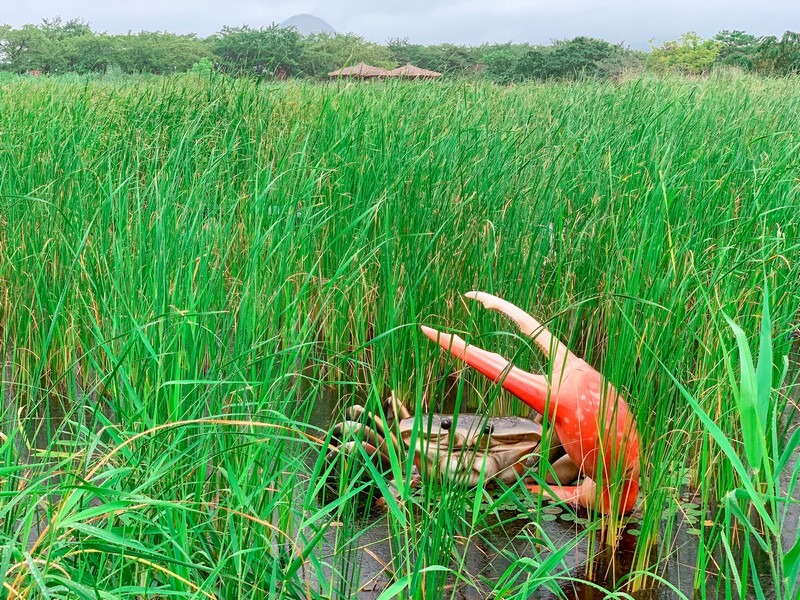
Wildlife Alive & Well
While you really don’t see too much wildlife in the rest of Korea, the wetlands is awash with animals from birds to mammals that call the area home. This is also why it’s very important to stay on designated trails and respect the natural surroundings.
In Suncheonman, there are more than 20 species of mammals that include elk, otters, water deer, and leopard cats. There are also Zoobenthos which include muskippers, lugworms, crabs, clams, ark shells, and octopuses. Keep your eyes peeled to see the wildlife when you visit. You might have to look closely to see everything there really is to see.
No, that is NOT how big the crabs are. This is some gigantic Ninja-turtle like version but… if you’ve got good eyes, you’ll be able to see the real much much smaller version crab-walking around.
Hallyu Scenes
While there aren’t any sort of quirky photo-op spots here like many places you visit in Korea, there still have been some quite memorable scenes in Korean dramas filmed in the Suncheon Bay Wetland Reserve. Scenes to recreate include:
- Temperature of Love (사랑의 온도): On SBS in 2017, On Jung-sun (Yang Se-jong) and Lee Hyun-soo (Seo Hyun-jin) take a cruise in the wetland and walk along the wooden boardwalk in the reeds.
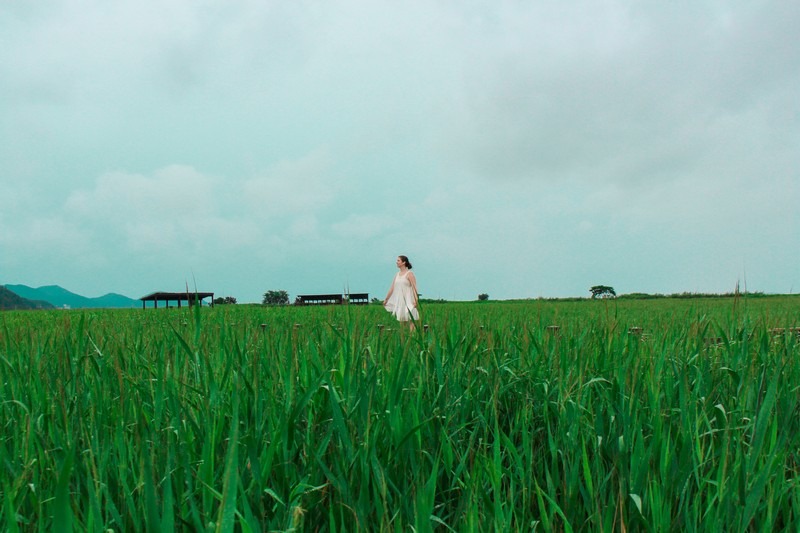
Plan A Visit To Suncheon Bay Wetland Reserve
The best season to visit Suncheonman Bay
There is really no “best” season though a couple are more popular than others. I’ll quickly share some of the highlights of each season according to their own Suncheonman brochures. We visited during the monsoon rainy season of summer in Korea and really enjoyed the visit personally.
- Summer: The reeds of the wetland are lush and green and seem to blanket the landscape. There are red-foot crabs hidden in the reeds that you can find if you look closely and they seem to play a kind of game with the mudskippers that can also be seen flapping and flipping around. The summer views were quite spectacular and the depth of the greens that surrounded us was very filling when all we needed was a breath of fresh air and natural views.
- Fall: This is quite possibly the most popular time to visit the reserve as the reeds that endured the summer sun now shift back and forth in the autumn breeze and change to a golden brown. Every picture I ever saw of the wetlands that first drew me were of it in the autumn. Snipes and egrets come to visit and fly from place to place finding food while the hooded cranes come to visit too. The animals are preparing to migrate or hibernate.
- Winter: Winter migratory birds flock to the bay as the weather is warmer here and food is abundant. The hooded cranes stay in the area and settle into resting spots at nearby farmland. Wild geese, ducks, yellow-billed Spoonbills, and osprey come to visit and catch fish. Otters also come to visit during this time. There is a lot more activity than people may realize in the winter months at the bay.
- Spring: As the snow melts and hibernating animals awake, the tidal flats are filled with holes as the animals emerge. Reeds sprout and carpet the land. Summer migratory birds begin to come including warblers who sing loudly to find their mates in the area.
Rules to Remember When You Visit
- Do not collect any plants or other living things.
- Stay on designated trails.
- No food, alcohol, or smoking is permitted inside.
- Bicycles, scooters, and kickboards are prohibited inside.
- There is no lighting on the trails so be cautious if you’re visiting into the evening.
- Drones and hellicams are prohibited due to the migratory birds in the area.
- Strollers & wheelchairs are available to borrow at the ticket office.
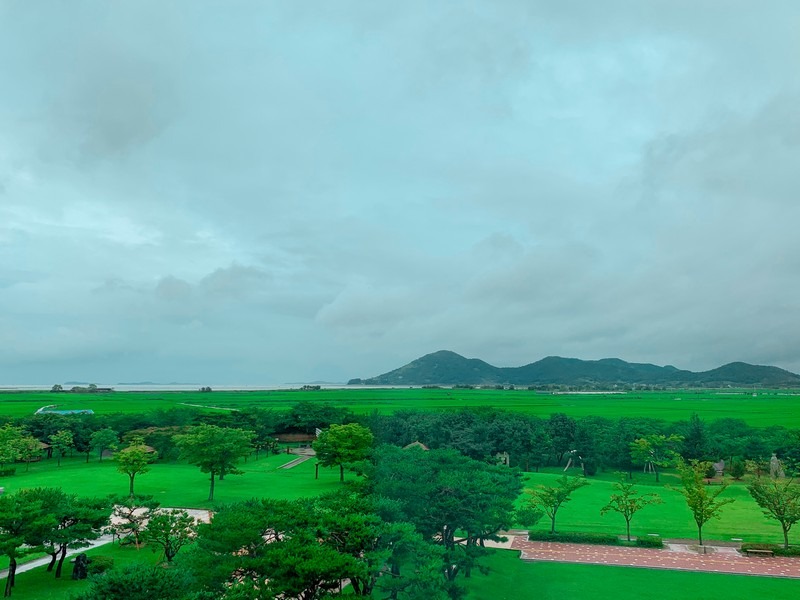
What You Can’t Miss
The Suncheonman Eco Museum & Observatory: After buying your tickets and entering, there are some key places you definitely need to visit. You’ll pass by the Suncheonman Eco Museum and Observatory which is a great spot if you’ve got kids because it’s informative and has some great views. If you’ve got young kids, you probably won’t make it to the Yongsan Observatory, so this is your best bet for views. The eco museum has information about the diverse creatures to find and will get you excited for what is to come. The observatory is actually the first flat astronomical observatory in Korea is is where bird watchers and astronomical observation takes place. The view out over the bay is the picture above.
The Sounds Of Nature Experience Center: This space was established in 2008 and allows the visitor to experience the sounds of the benthic animals, birds, and animals that reside in the bay. Another great spot with educational value.
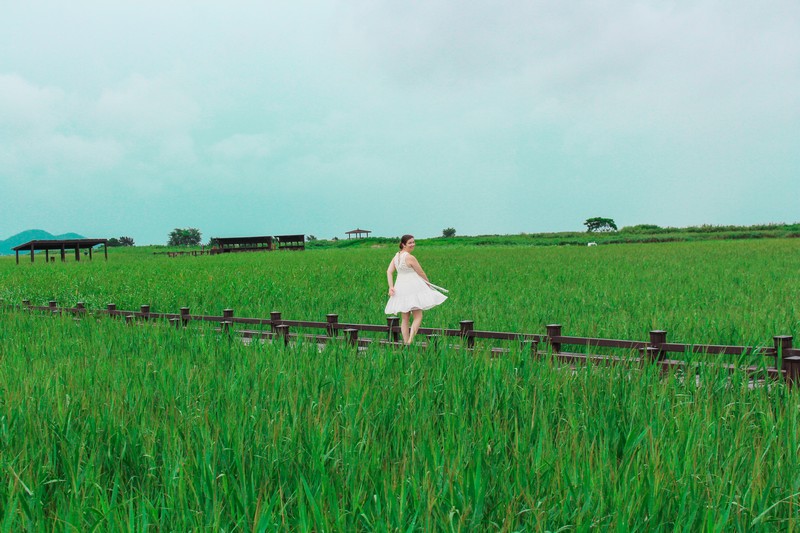
Daedae Port: Before you head over the Reed Bed Boardwalk, you’ll see the port which is where you can get a ferry ticket. The experience operates at speeds of less than 7 knots to prevent damaging the tidal flats and so there is no noise pollution to interrupt the birds, head phones are used for all guests. The ferry tour takes about 35 minutes to travels for 6 kilometers.
- Admission: Adults: W7,000; Teens: W3,000; Children: W2,000
- For an updated time table with ferry times, visit the Suncheonman Wetland website: http://www.suncheonbay.go.kr
The Mujin Bridge & Reed Bed Boardwalk: Mujin is an imaginary space. Though in this case the bridge is very real, it’s meant to be a divide between where humans have developed and built the land and where the animals and nature takes over. It’s a divide and a connection at the same time.
Crossing over, you immediately feel as if you’re entering a calming natural space where all of the buildings and paths melt away and it’s just you breezing through the reeds. From the boardwalk, you should peer down to see the creatures that call this place home. They’re there. You just have to stop and enjoy the scenery to find them.
Yongsan Observatory: The flat boardwalk was enough for us with the little people we dragged along, but if you are ready for a climb, there is an observatory that you can continue on to which has amazing views of the sunset and the entire bay area. Yongsan is a relatively small mountain and really isn’t a huge hike, but it is a steep hustle, so keep that in mind if you want to make the climb and get all of the views.
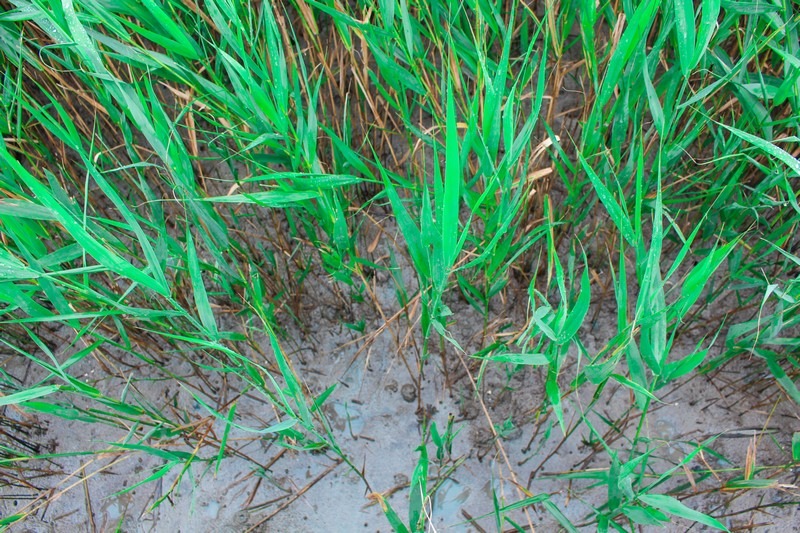
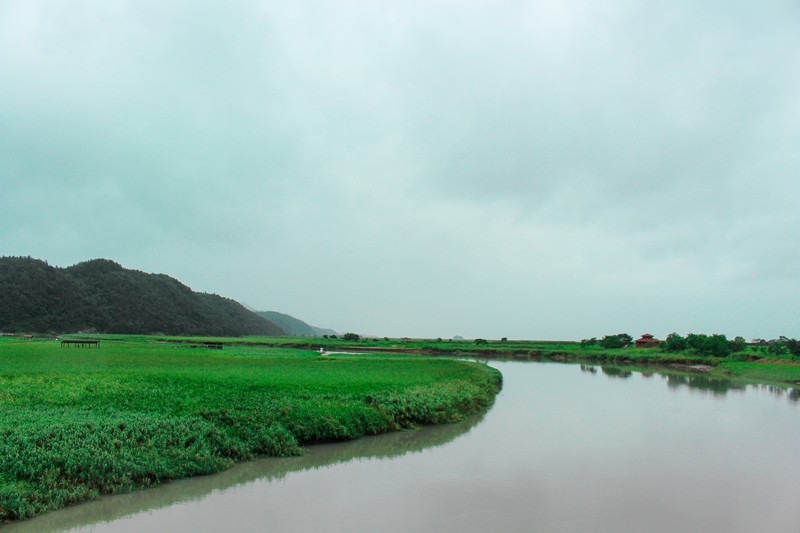
If you hit all of the spots mentioned, the visit will take you at least 2 hours but you could really spend an entire day in the wetlands enjoying the scenery, finding the creatures, and learning about this amazing part of Korean natural scenery.
Did you like this post? Pin It!
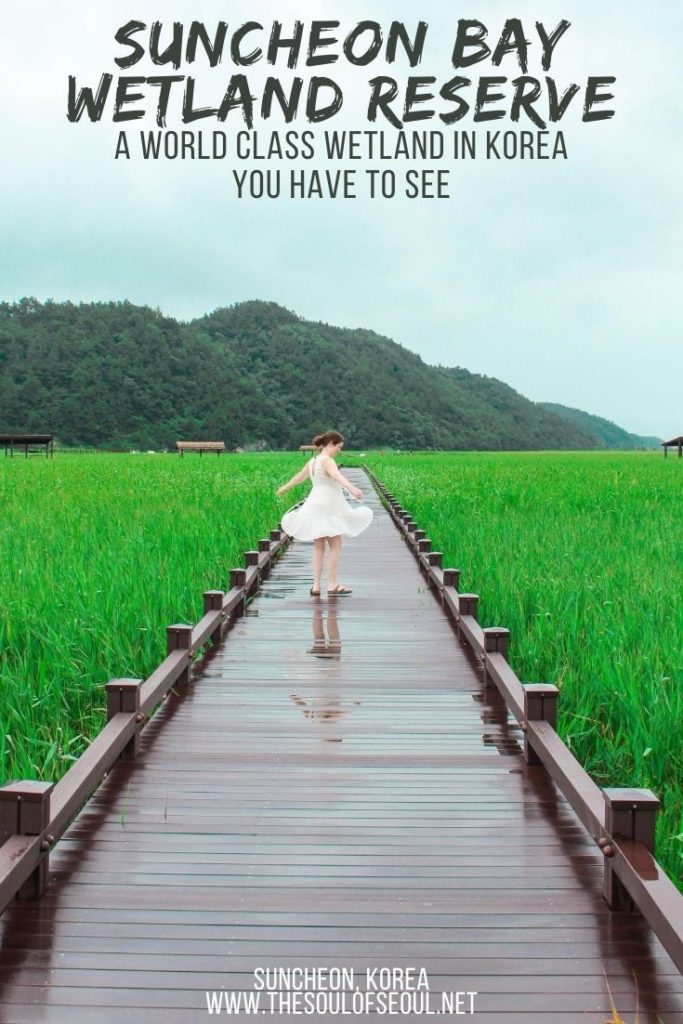
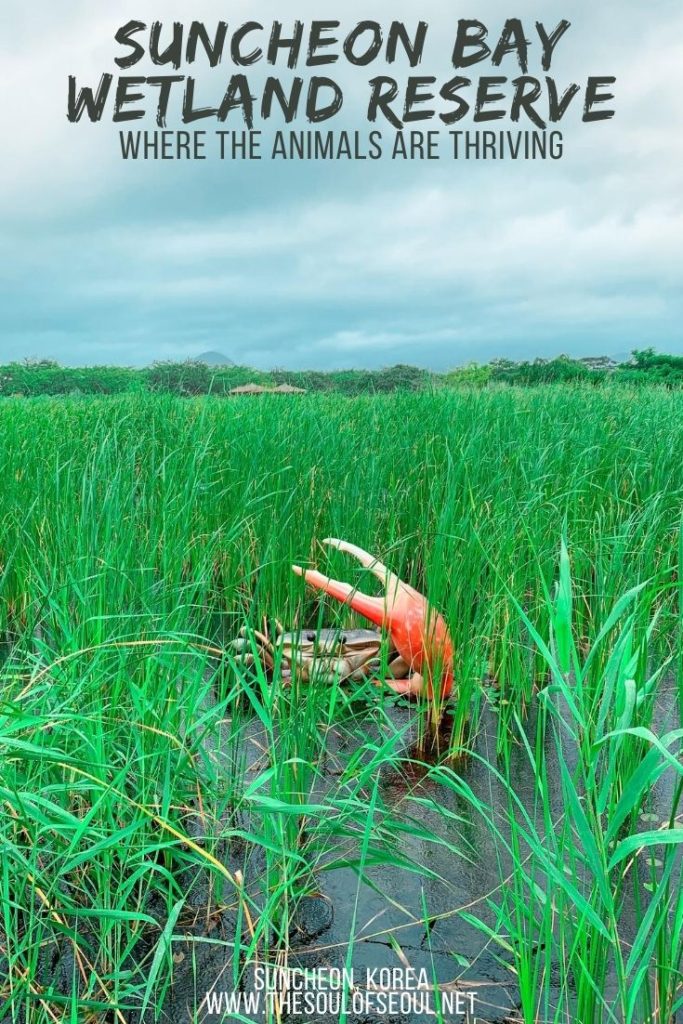
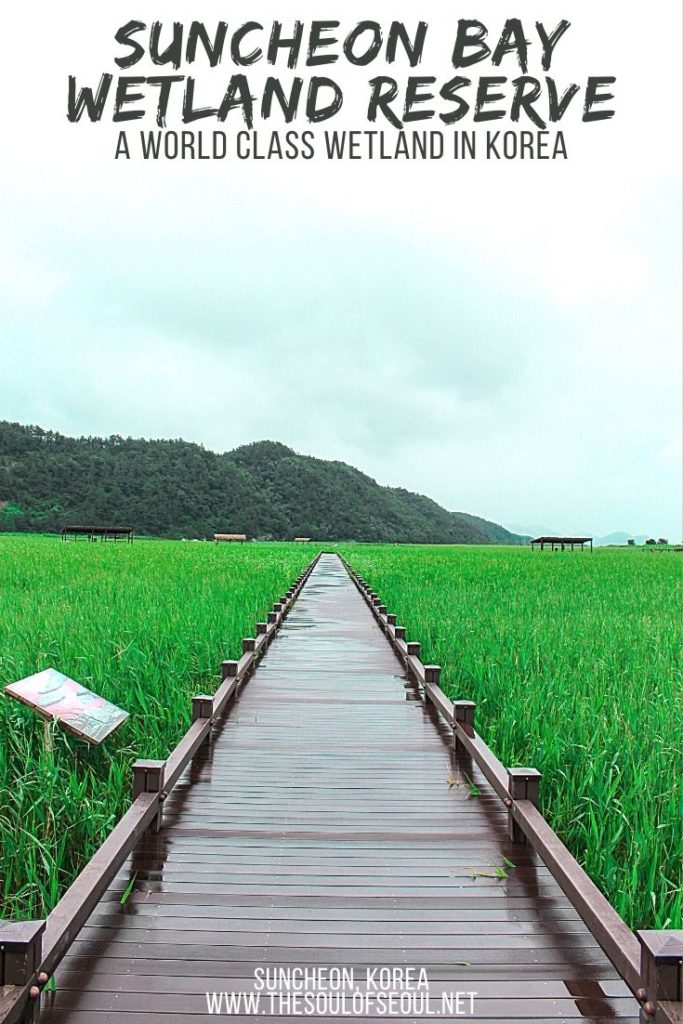
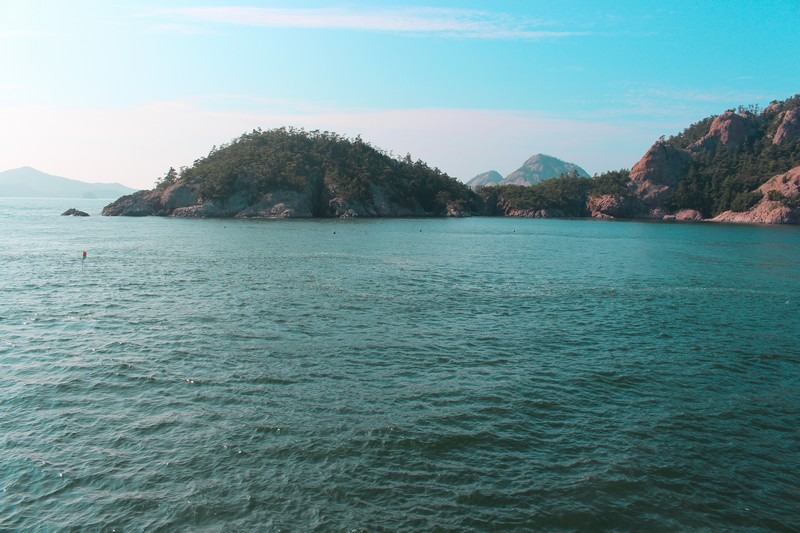


One Comment
Lucia
Thank you for this informative breakdown of what to see/what to do in Suncheon! I’m planning a visit soon (from Boseong) and will use this blog post as a resource. The pictures are absolutely stunning!